There are so many different types of guitars out there. Chances are, we each conjure up a different mental image based on what we play, the type of music we prefer, and other personal influences.
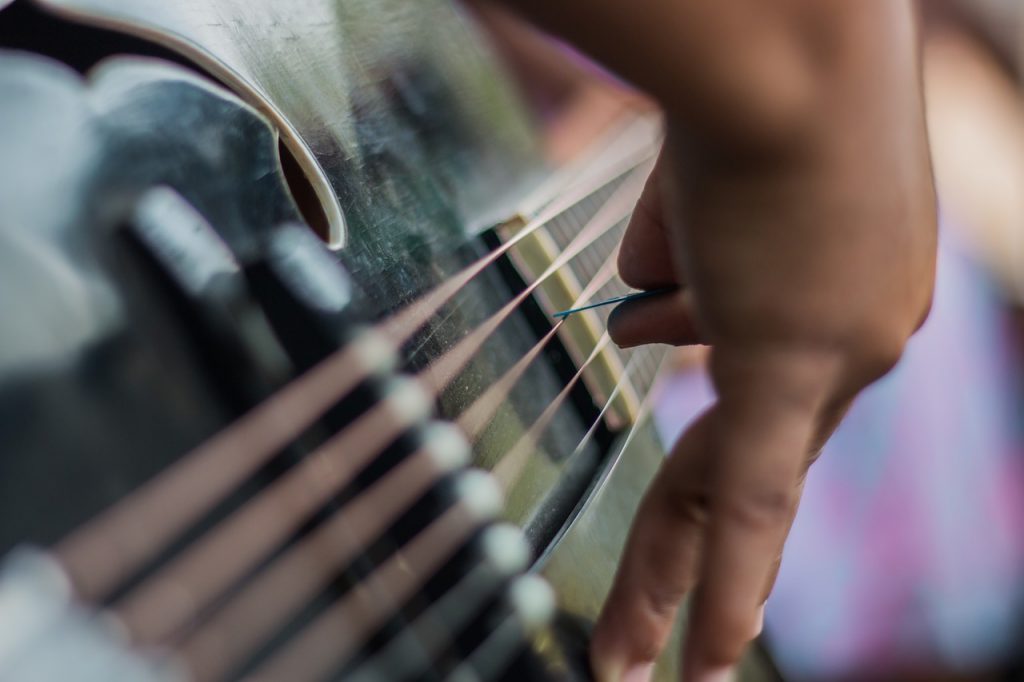
IN THIS REVIEW
The Different Types Of Guitars
Origin Of The Guitar
How To Choose The Right Type Of Guitar
Acoustic And Electric
Size & Shape
String Types
12+ Types Of Guitars
Acoustic (Steel String)
Classical (Nylon String)
Acoustic-Electric
Hollow Body & Semi-Hollow Body
Electric
Bass
12-String
Non-Standard String
Double Neck
Resonator
Lap Steel
Common Questions
Similar Instruments
Conclusion
The Different Types Of Guitars
There are more guitar types than there are days of the week. There are more types than there are months in a year. And they all have their own unique sound and style of playing. Sometimes they have multiple ways of being played.
Let's dive into the deep and wonderful world of guitar types.
Origin Of The Guitar
The history of the guitar goes back a little more than three thousand years. In fact, the earliest depiction of a guitar-like instrument comes from Babylonia. Historians have discovered a stone carving with a depiction of a Hittite Bard playing a stringed instrument.
Throughout the centuries the guitar and other chordophones evolved. Some of the earliest forms of the guitar are thought to be from medieval Spain. Unfortunately, there are no surviving records of those instruments. However, in the 1200s there was a Spanish instrument called the guitarra latina which is believed to have inspired future attempts at a guitar like instrument.
The European lute is thought to be the true predecessor to the modern day guitar. It had a rounded body, a flat soundboard, a single soundhole, and a series of strings stretched across a fretboard.

Finally, during the 18050s a series of Spanish luthiers started to standardize the way in which a guitar body should be built. Most notably, Antonio Torres Jurado who developed the internal bracing, as well as some other features, that have been carried on and continued in the instrument we know today.
How To Choose The Right Type Of Guitar
Whether you are just starting out or you have been playing for a while, choosing a guitar is never a simple task. Especially when you truly consider how many different types of guitars there are.
Acoustic Or Electric
The two main types of guitar are acoustic and electric guitars. They both rely on a series of vibrating strings and a resonating body. However, their similarities change quite a bit from there.
An acoustic guitar is a rather large, hollow body instrument. Its sound comes from the strings vibrating and the body resonating its sound through a sound hole (this is obviously an overly simplified explanation).
An electric guitar has a completely solid body. Instead of strings running through across a soundhole, they run over pickups. The pickups, using magnets, convert the string vibrations into an electrical signal. This signal is then sent through a guitar cable and into an amplifier.
An acoustic guitar is able to be played just about anywhere without the need of external amplification. Because of the body size and shape, it is able to provide its own amplification courtesy of its soundhole.
An electric guitar is not able to amplify itself. Due to its solid body, it is unable to project sound in the same manner as an acoustic. It relies solely on relaying an electric signal through external amplifier.
Which one you pick depends entirely on what sounds you are looking for and what style of music you are most interested in playing.
Guitar Size And Body Shape
Acoustic guitars are almost always larger and heavier than electric guitars. Since electric guitars do not rely on a resonating chamber for their sound, their electrical components can be very compact and, therefore, light weight.
Acoustic guitars comes in a variety of different shapes and sizes. The most typical one you see is the dreadnought body style. However, there are smaller versions such as the Parlour guitar.
You will want to figure out what style of guitar you are most comfortable holding and playing.
Types Of Guitar Strings
The strings are what give your guitar its sound. There are a few different types of strings you can choose from.
Steel Strings
Steel strings are, far and away, the most commonly used guitar strings. They are used on acoustics and electric guitars. You will find them playing just about every musical genre that involves a guitar.
Steel strings are strong, durable, and give a bright and loud tone. This makes them so versatile across many genres. They can be a bit rougher on the fingers when first learning how to play, though.
Nylon Strings
Nylon strings are almost exclusively found on classical guitars. While they are not as widely used as steel strings, they provide a sound that steel strings cannot.
Nylon strings offer a much softer, warmer tone than steel strings. You will most often hear them associated with classical music, instrumentals, and Spanish, or flamenco style guitar.
12+ Types Of Guitars
This list is not completely comprehensive but offers a peek into the vast world of guitar types.
Acoustic (Steel String)
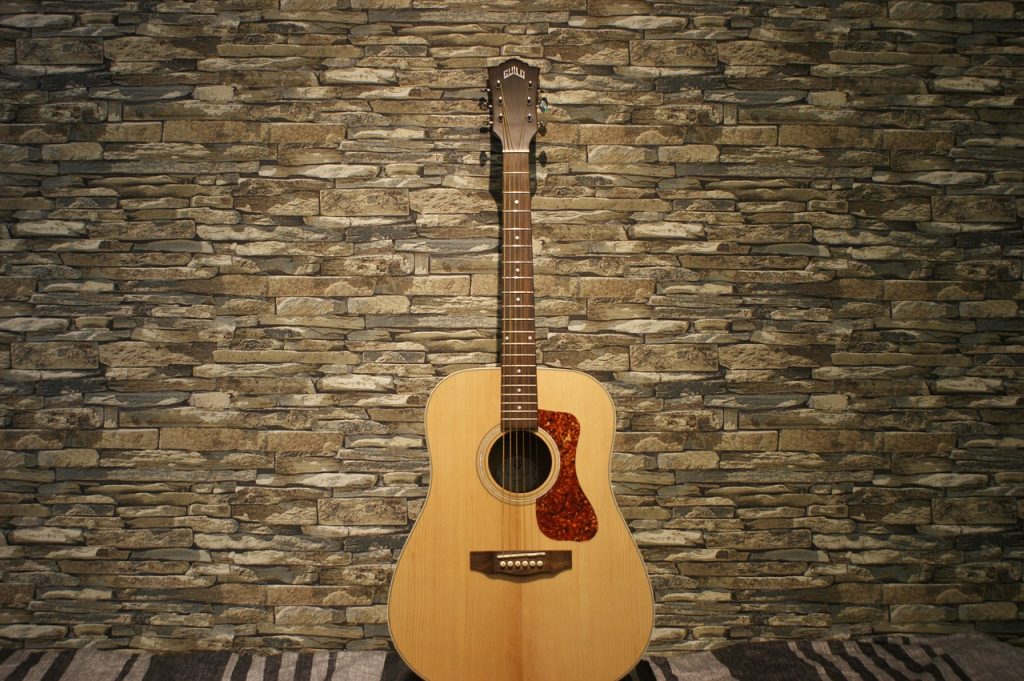
Steel string, acoustic guitars are probably the most popular guitars around. They are found being played in almost every style of music, from rock, pop, country, and hip-hop.
As noted above, they have a large resonating chamber that is responsible for projecting its sound. This makes it ideal for playing in places that do not require amplification. You will often see them in coffee shops and other intimate gathering. However, if you want to play them in larger settings they can be amplified using a microphone or by installing an acoustic pickup.
Acoustic guitars are great for beginners. You can generally find a decent acoustic guitar for not too much money. They do not require an amp and will toughen up a new player's fingers pretty quickly.
Classical (Nylon Strings)

Classical guitars are a subset of acoustic guitars. They typically have thicker and wider necks. But the key difference is their strings.
Classical guitars use nylon strings. Because of this, they are perfect for playing many styles of more guitar focused compositions. Instrumental pieces sound beautiful as well as Spanish guitar and flamenco styles of music.
Classical guitars have such a warm and beautiful tone. It is hard to find another guitar on this list that can give you such a rich and unique sound.
Acoustic-Electric (Electro-Acoustic)
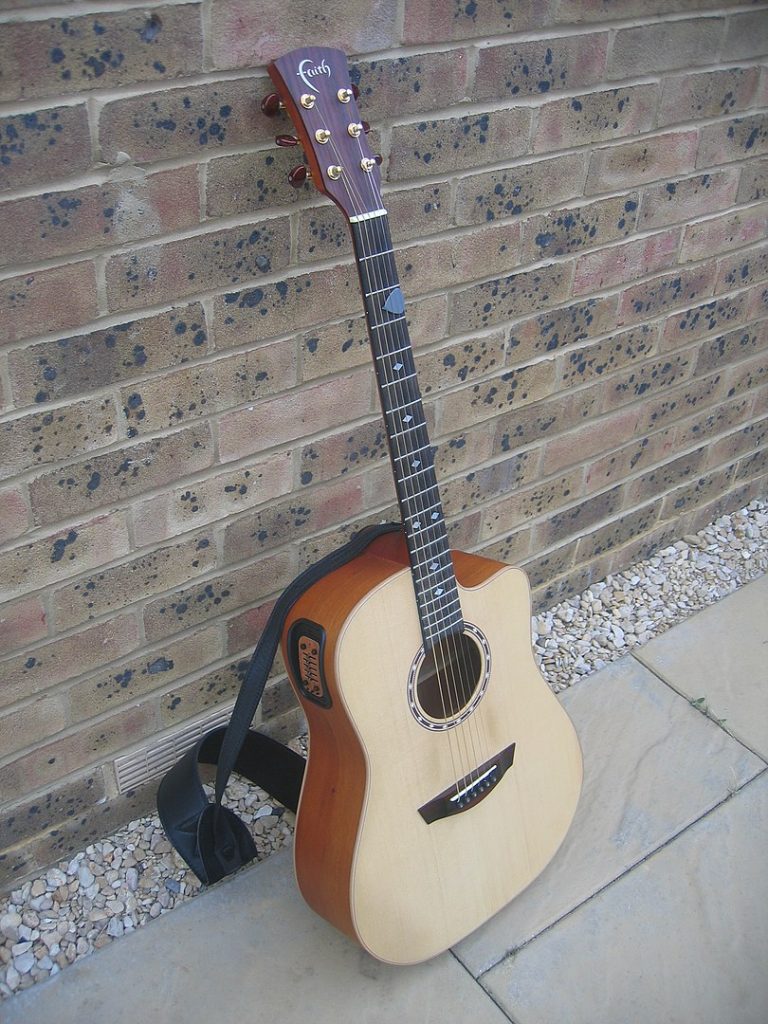
There is not much that can be said for an acoustic electric (or electro-acoustic) guitar that wasn't already stated about the standard acoustic. The only difference between them is the presence of an acoustic pickup.
There are times that they may not sound quite as good tonally due to the presence of the electronics dampening some of the instrument's resonance capabilities. However, the difference is not so drastic that it outweighs the convenience of being able to hook into a sound system and play away.
Hollow Body & Semi Hollow Body

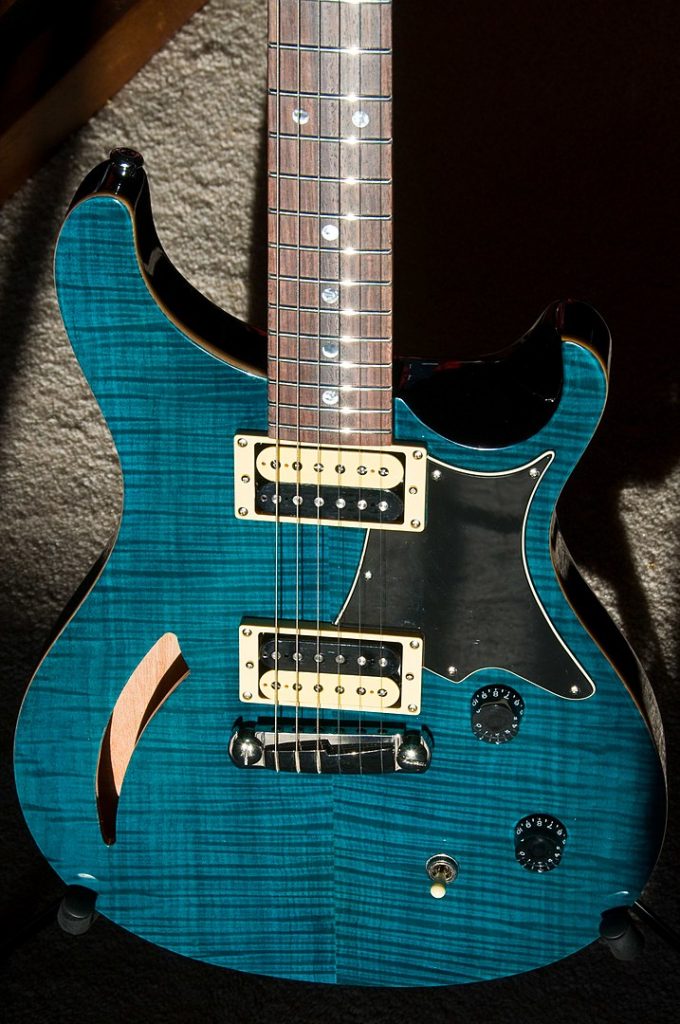
The hollow body and semi-hollow body electric guitar is basically an electric guitar with a much thinner acoustic body. The hollow body came first in an attempt to give the guitar a much needed volume boost.
However, once the volume got a bit too high, the hollow body is notorious for feedback. Thus, the semi-hollow body was born. The only difference between the two is a solid wooden block to which the pickups are mounted.
Both versions are still widely used and are loved for their rich and warm tones.
Electric Guitar
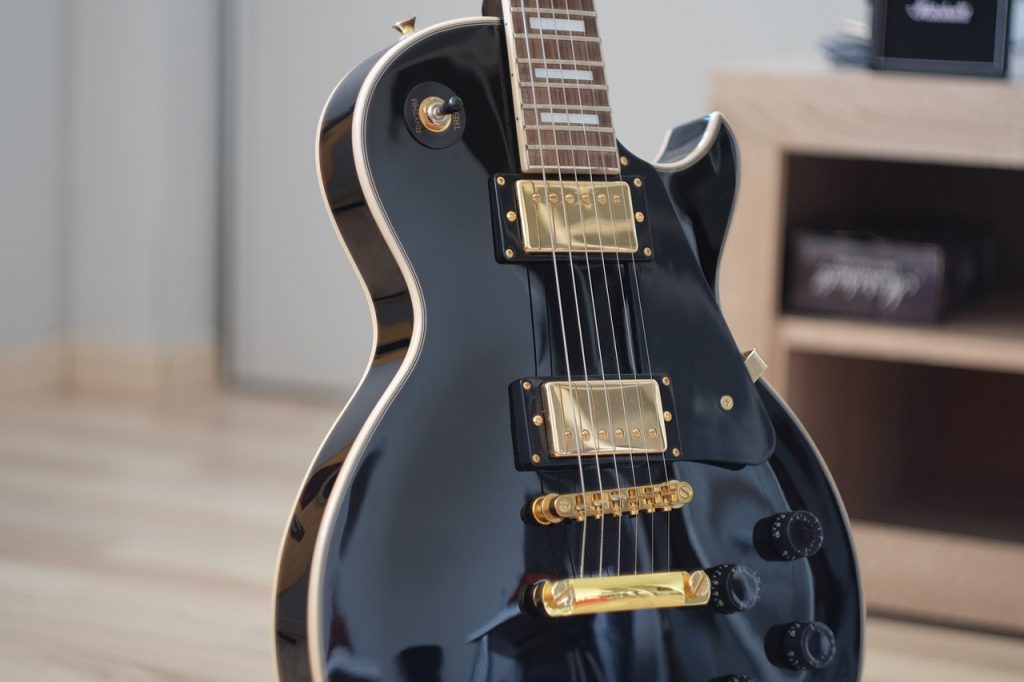
The electric guitar is synonymous with rock & roll. But that's not all it's good for. You can play an electric guitar in every single style of popular music today. You can find it in the most southern of honky tonk bars, the classiest jazz clubs of New York, in the hands of almost every prominent blues artist, as well as on many huge hip-hop tracks.
The ability to amplify it and add in pre and post effects to your performance or recording gives the electric guitar versatility like no other instrument around.
Bass Guitar

The bass guitar can be found in both electric and acoustic form. It operates the same as any other guitar. The key difference is the thickness and pitch of the strings. Bass strings are meant to cover the lower end of the sound spectrum while playing.
Typically, a bass will have 4 strings, which match the tuning of the top 4 strings of a guitar; E, A, D, and G. However, there are models out there that have 5, 6, even 9 or 10 strings!
12-String

The 12-string guitar may look intimidating at first. Don't let that huge number scare you. Essentially, a 12-string guitar is a standard 6-string with each string doubled. What that means is you will have your regular set of strings and paired directly next to them is an additional set, one octave higher.
For example, your tuning would look like this: E-E - A-A - D-D - G-G - B-B - e-e.
You play it the same way you play a standard guitar. When you fret a string, you end up holding 2 strings down at a time. The sound is unique and has been behind some of the most iconic rock songs in history, like Stairway to Heaven.
Non-Standard Strings
7 String/8 String/9 String
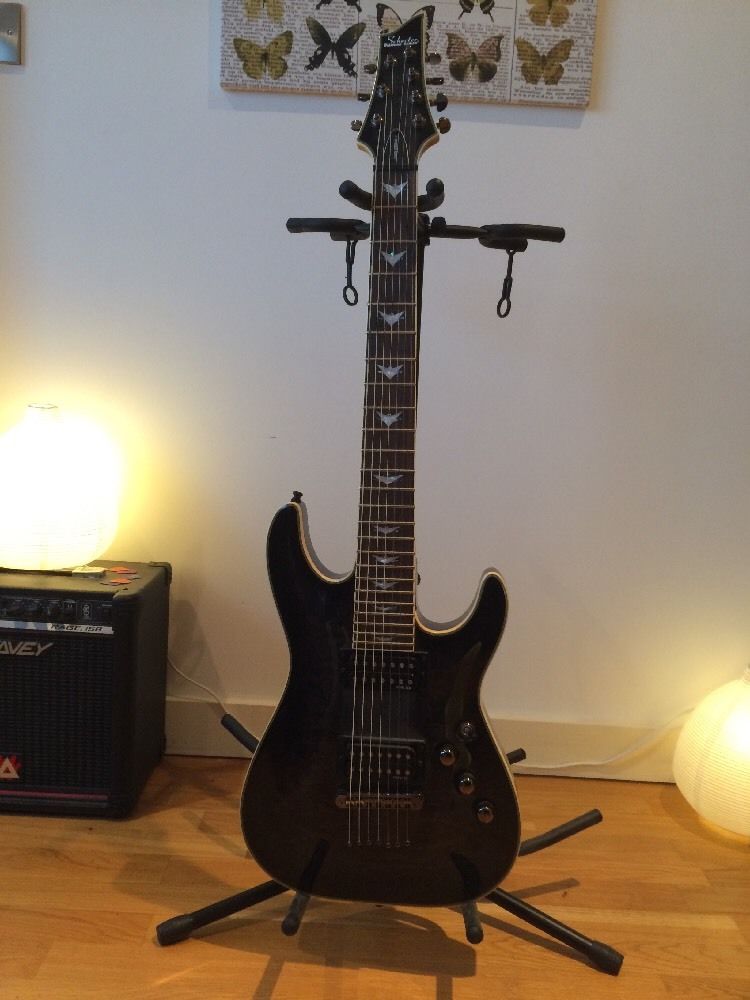
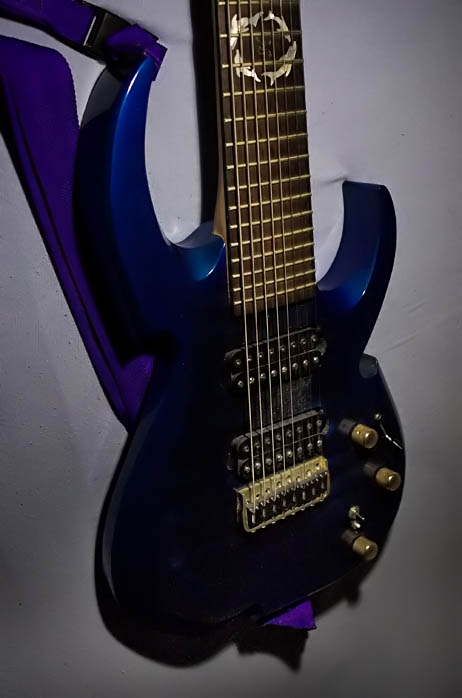

It may seem a bit excessive but you can find guitars with more than 6 strings. Unlike the 12 string guitar above, 7 strings, 8 strings, and 9 string guitars each have additional single strings (no doubling up here).
Primarily they are used in heavier styles of music, like death metal. However, they are also commonly found in some jazz settings as well.
Harp Guitar
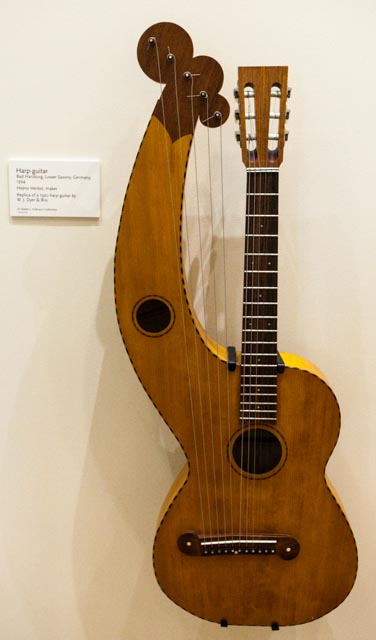
The harp guitar is exactly what it looks like. You have the body of a guitar with it's neck and fretted fingerboard. It is played like a normal guitar.
The additional harp piece is designed to be plucked just like a harp. The strings are tuned to the key of the music you are playing and the strings are plucked or strummed with no need of fretting.
Double Neck/Multi-Neck Guitars
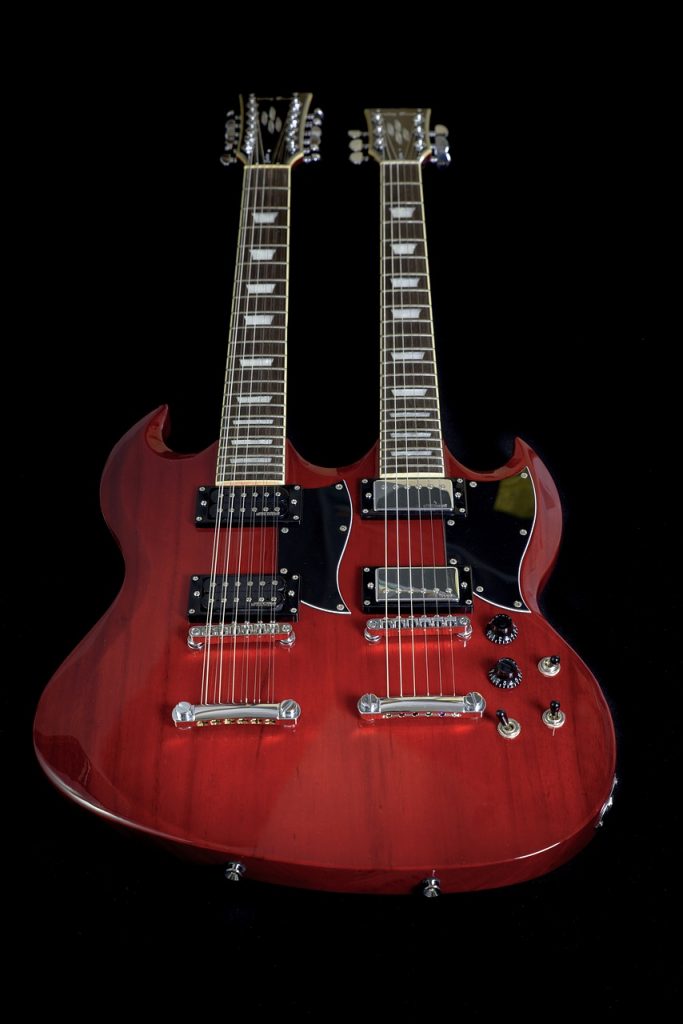
A double neck guitar is basically a 6 string guitar and a 12 string guitar smashed together. You will sometimes find it to be a pair of 6 strings, tuned differently.
This instrument was made famous by Jimmy Page while playing Stairway to Heaven. Throughout the song he strums the 12-string gently before playing his solos on the 6 string. This guitar was key to not needing to switch instruments mid song.
Michael Angelo Version (Double and Quad Neck)
I had the privilege of seeing Michael Angelo Batio put on a guitar clinic at a local music store years ago. To this day, I have never seen anyone else come close to what he is able to pull off. His double neck guitar is not like the one above. He is able to play both necks at the same time.
He cranks up his sustain and distortion so he does not need to pick the strings while playing both necks. You are not likely to find one of these easily. They are almost assuredly a custom designed piece.
And his quad neck...I don't even know what to say. Just watch his demo below.
Bill Bailey Version (6 Neck Guitar)
This is honestly just a joke of an instrument. I have never seen Bill Bailey play anything other than the top two necks of his 6 neck guitar. I believe he had it made just for the spectacle of it.
But, I felt it needed a spot on this list of different and unique guitars.
Resonator
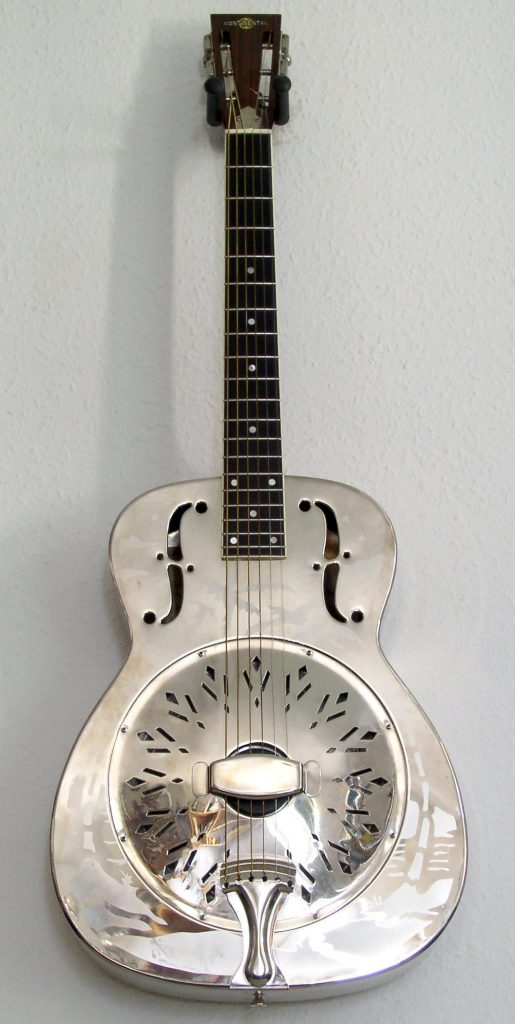
Resonator guitars were initially developed in the 1920s with the intention of being louder than a standard acoustic. The metal body and internal metal cone vibrate and amplify the sound of the strings.
This instrument is louder than an acoustic guitar but has stayed around due to it's unique tonal qualities. You will most often find a resonator in bluegrass and blues music.
Lap Steel
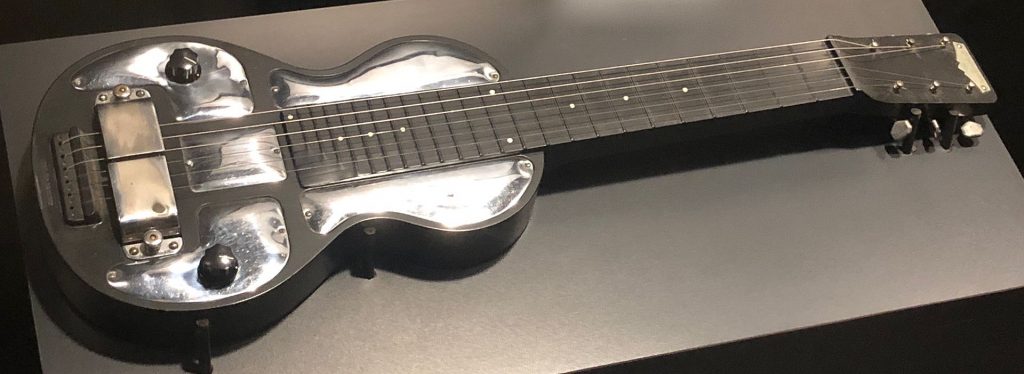
Lap steel guitars are small instruments that are designed to be played, as the name suggests, across your lap. The instrument lays across your lap and is strummed or plucked.
To change the pitch of the notes, you will use a slide or steel and move them across the tops of the strings. The action is also considerably higher than on a standard guitar. The strings on a lap steel are not meant to be fretted.
Common Questions
While researching the many different types of guitars we came across some pretty common questions. Here is our attempt to answer some of the more frequent ones.
How many types of guitars are there/What are the different types of guitar/What are the 3 types of guitars?
There are really just two main types of guitar; acoustic and electric. There are, however, many, many styles of guitar that fall under these two categories.
When people ask about 3 main types of guitars they are typically classifying a Classical guitar as it's own guitar type. Although, the classical guitar is technically an acoustic guitar.
Which type of guitar is best?
There is no good, across-the-board answer to this question. It really depends on what your goals and intentions are. Many teachers think a classical or steel string acoustic are best for learning and beginners.
If you are playing rock music, an amplified and effects driven Electric guitar is considered best. If you want to play country, bluegrass, or folk, you are more likely to think an acoustic guitar is best.
The type of guitar that is best is the type of guitar that accomplishes your personal goals.
What is the hardest type of guitar to play?
Typically, an acoustic guitar is going to be the hardest type of guitar to play. Steel string acoustics have larger, thicker strings with higher action than a standard electric. Classical acoustics typically have wider and thicker necks, as well.
For electric guitars, if you are a beginner, anything with more than 6 strings (7 string/8 string/9 string/etc) will be more difficult to play.
How do I choose a guitar/How do I choose my first guitar/What type of guitar should I buy as a beginner?
Take in to account your personal skill level, budget, and goals. Do some research within those areas, play the guitar in-store if you can, and select the one that fits each of those categories best.
What is the easiest type of guitar to play?
Electric guitars are generally the easiest guitars to play. They usually have thinner strings, thinner necks, and are more light weight.
What are those big guitars called?
The most commonly seen acoustic guitar body style is the dreadnought. It has a fairly large and bulky shape. Another big guitar is the Jumbo body style. It is similar in shape to the dreadnought but is sometimes even larger.
Does the type of guitar matter?
It definitely does. Different guitar types are used in different styles of playing. Some have wildly different tonal ranges, as well. For example, you probably won't find too many Ukuleles in the djent metal world.
Which wood is best for guitar?
Tonewood is another one of those things that is entirely subjective and depends on the player on what sounds best. With that being said, Spruce is one of the most commonly used tonewoods because it is almost universally seen as giving a superior sound.
Similar Instruments
The guitar is not the only stringed instrument out there. There are many other similar chordophones.
Banjo

Although it is believed to have originated in the Caribbean, the banjo is mostly associated with bluegrass and country music. It has a very bright tone and a signature "twang" to it.
It features 5 strings stretched across a round body. The round body has a membrane, similar to a drum, to act as a resonator.
Mandolin
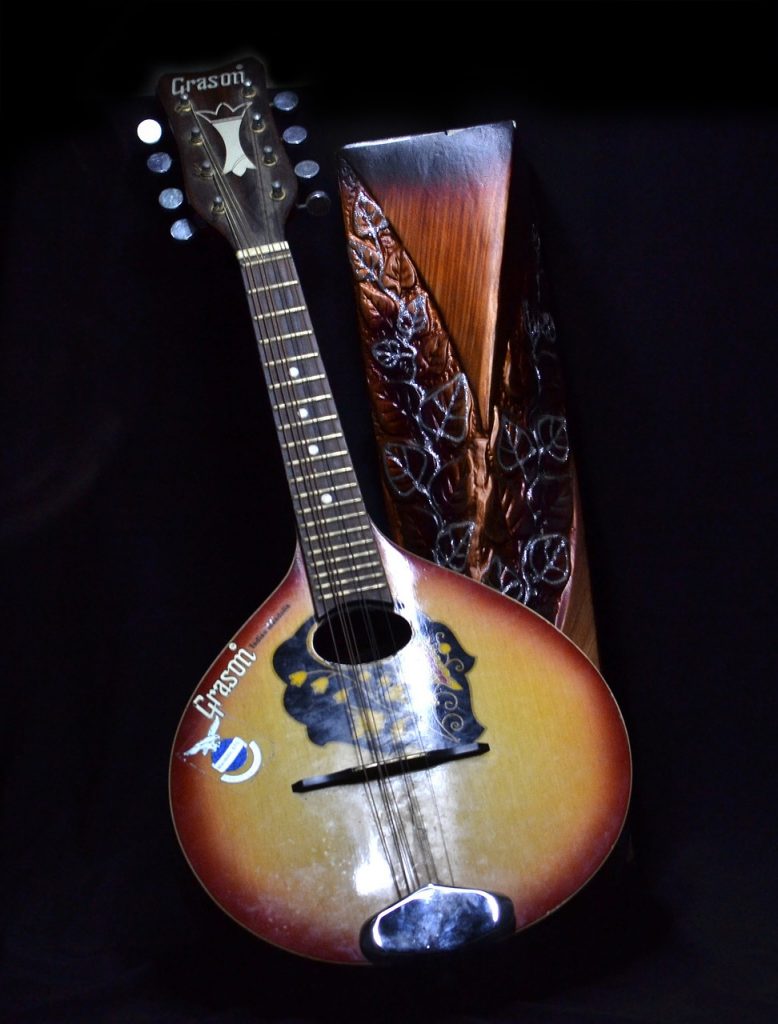
The mandolin is another instrument that is widely associated with bluegrass and country styles of music. It's origins are based in Italy. It is generally found with 8 strings, 4 doubled sets. However, there are also 10 and 12 string variations.
Sitar

The sitar is most well known in the west because of George Harrison's, and the rest of The Beatles, obsession with Indian culture during their psychedelic phase.
Outside of the western world, the sitar has a long history dating back to the 13th century. It is about 4 feet long, has a wide, hollow neck and a short wide body. The tuning pegs run along the top of the neck as well as a few front facing tuners on the head stock.
It is a beautiful instrument that must be heard.
Ukulele

The ukulele is a Hawaiian stringed instrument. It typically has 4 strings and is tuned differently than a guitar; the high strings are on the outside with the bass strings in the middle.
You can find ukuleles in four distinct sizes; soprano, concert, tenor, and baritone. With each size up the tone become a bit deeper.
Zither
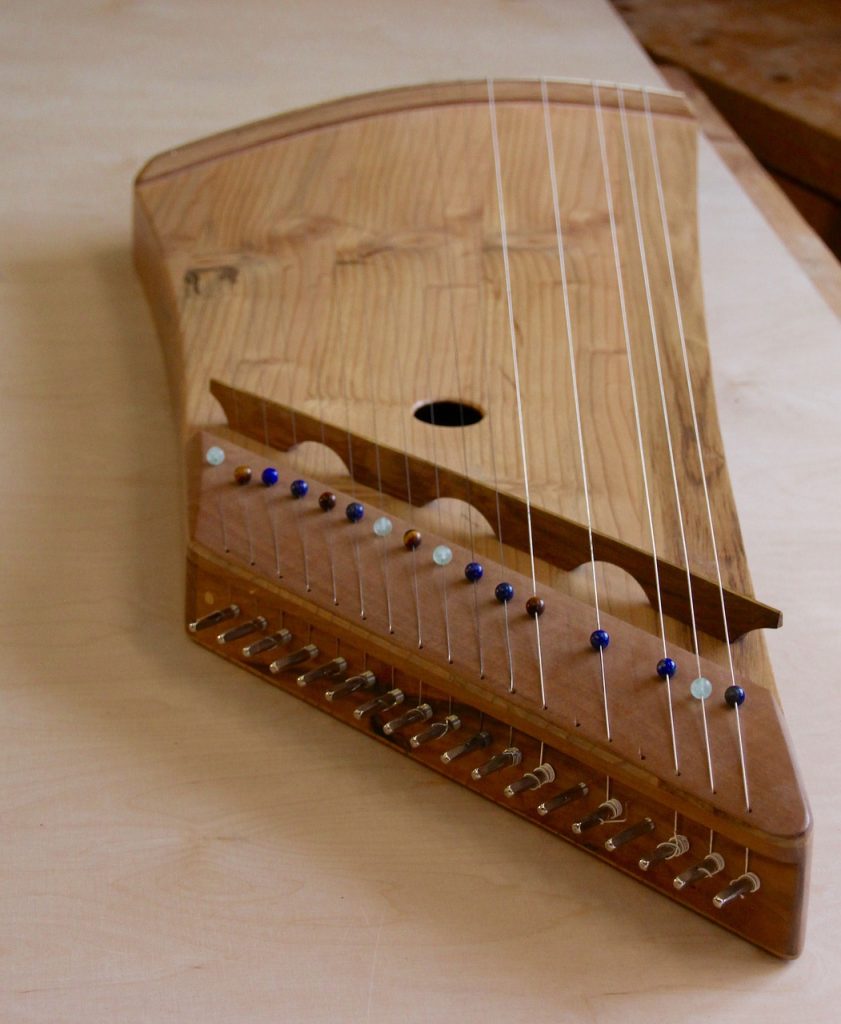
The zither is an ancient instrument and may be the original inspiration behind all stringed instruments. It can be plucked or strummed like a harp. Some methods of playing include striking the strings with special mallets or hammers. It has a soundhole and resonating chamber like a guitar. The strings can also range from 1 to over 50.
Conclusion
I bet you didn't realize there were so many different types of guitars, did you. One of the wonderful things about music is the fundamentals are the same, no matter the instrument. So don't limit yourself to just one type. Try out as many of these as you like.
Happy playing!







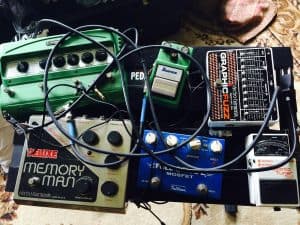

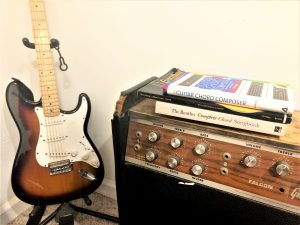

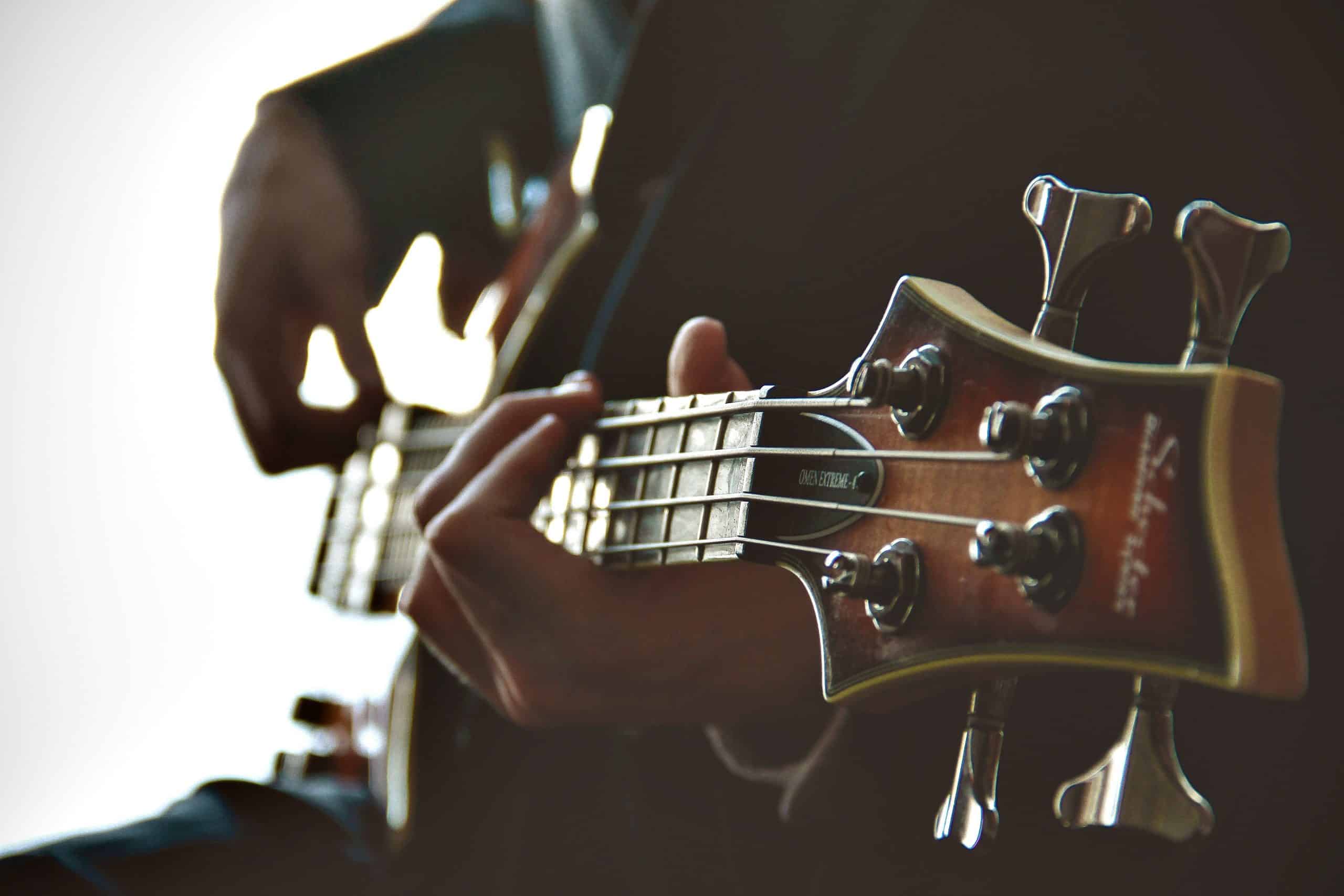
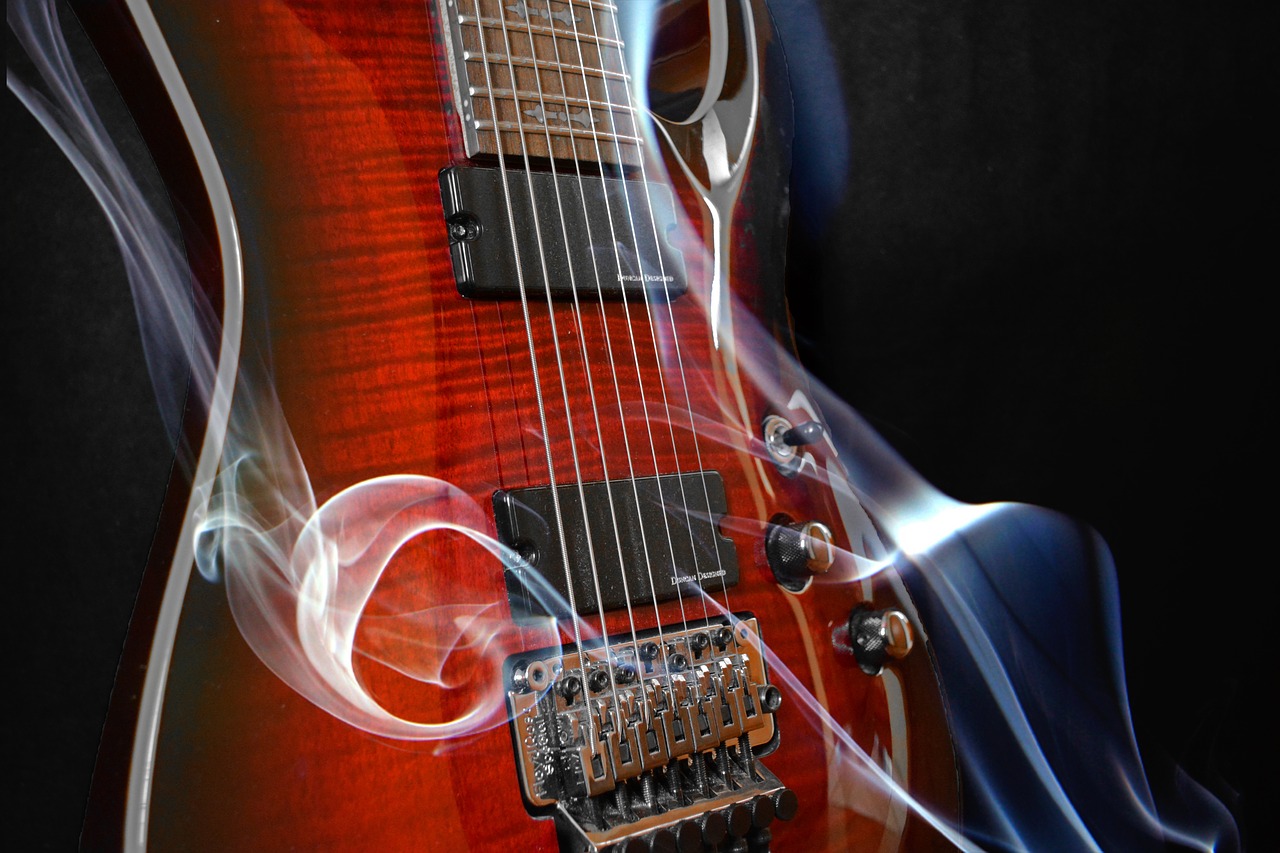


Leave a Reply